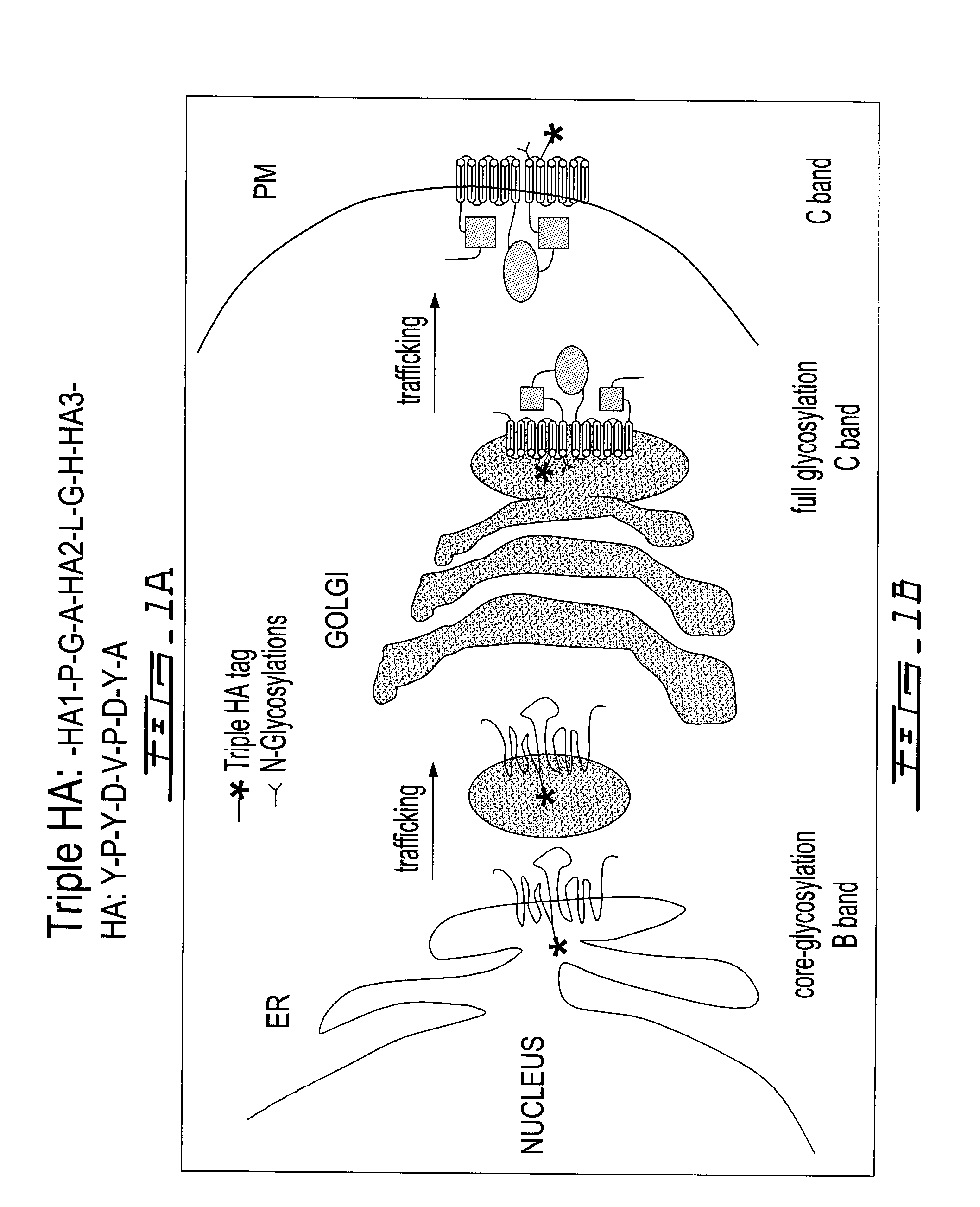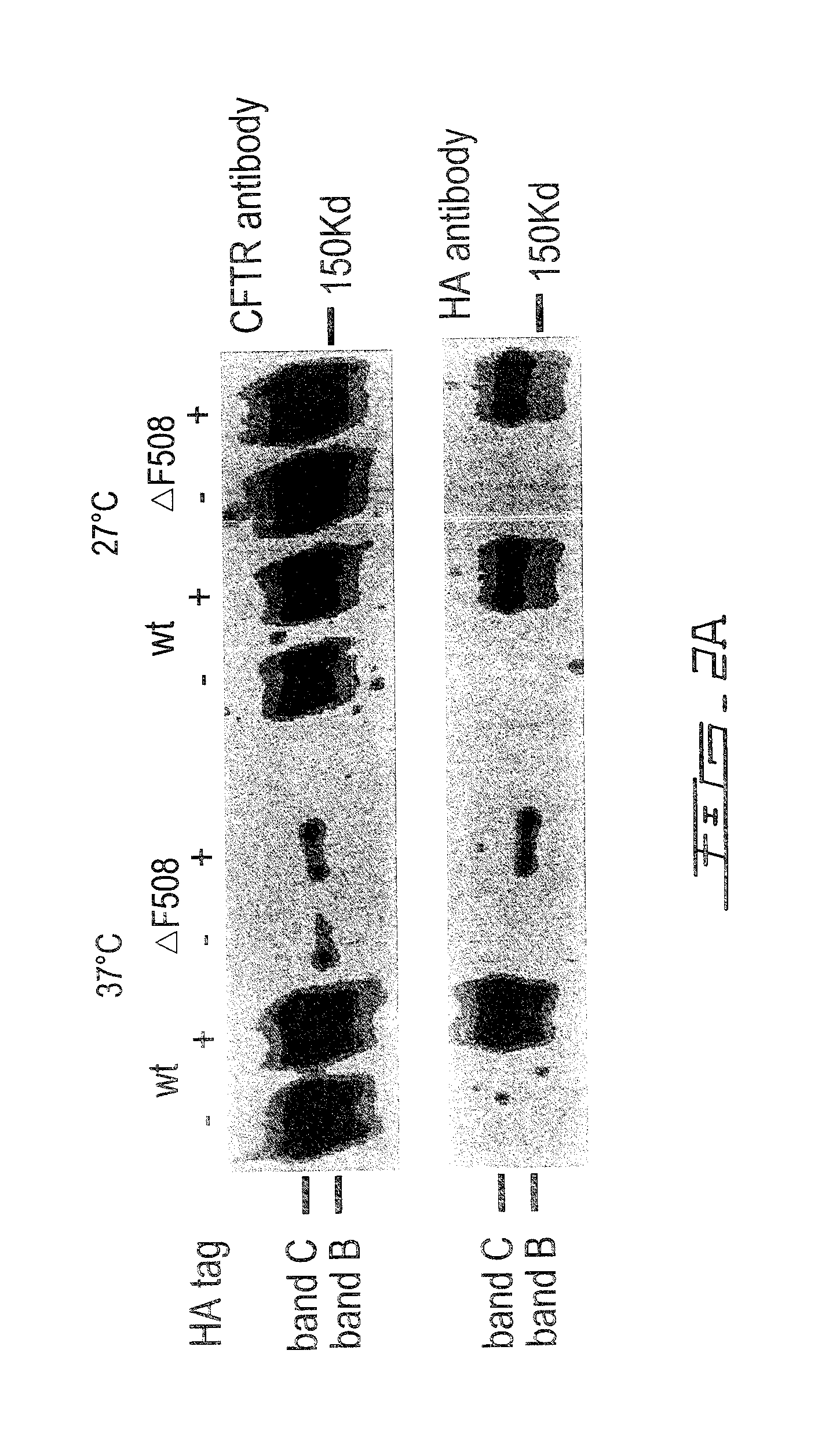Screening assay to identify correctors of protein trafficking defects
a protein trafficking and assay technology, applied in the field of biochemical assays or screens, can solve the problems of limited effectiveness of such assays, and achieve the effect of not affecting function and significant loss
- Summary
- Abstract
- Description
- Claims
- Application Information
AI Technical Summary
Benefits of technology
Problems solved by technology
Method used
Image
Examples
example 1
Compounds from Microsource Discovery (MDS)
[0049]A total of 2000 diverse drug-like compounds were used in the screen from Microsource Discovery.
Identification of ΔF508-CFTR Correctors and Characterization of Sildenafil as a Hit Compound
[0050]BHK cells expressing ΔF508-CFTR were incubated with test compounds (20 μM) for 24 hours at 37° C. in a 96 well format. Plasma membrane expression of ΔF508-CFTR was then assayed by immunofluorescence using a primary antibody directed against the inserted 3HA tag and a secondary antibody conjugated with a fluorophore (FITC). Untreated cells probed with the same antibodies were used as a negative control, and cells exposed to 0.1% Tween-20 detergent (so that antibodies had access to intracellular CFTR) served as a positive control. In the primary screen, strong hits were initially identified as those compounds giving a cell fluorescence signal that was ≧3 standard deviations (SD) above untreated control wells. Medium and weak hits were defined as co...
example 2
of Additional 1120 FDA Approved Drugs from the Prestwick Library
[0055]In addition to the MDS compounds, the 1120 Prestwick Library compounds were screened. (See FIGS. 7 to 12.) Of the compounds, one qualified as a “strong” hit, 3 as “medium” hits and 57 as “weak” hits. The Z score for the assay was 0.62. The top 50 hits were further tested in a counter screen in which the halide sensitive fluorescent compound (YFP) was expressed inside cells (Table 2). After incubation with the test compounds the ability of the cells to uptake iodide was measure by decreasing YFP fluorescence. In these cells this can only occur if functional CFTR is present at the cell surface (FIG. 7). The hits were also tested for the appearance of the Band C form of CFTR. This is the mature form of CFTR and occurs only if the protein has left the ER and entered the Golgi apparatus and hence is trafficking (FIG. 8). The functionality of the compounds was further studied by the use of Iodide efflux assays for each ...
example 3
n of ΔF508-CFTR Trafficking Defect by the Bioavailable Compound Glafenine
Materials and Methods
PUM
| Property | Measurement | Unit |
|---|---|---|
| temperatures | aaaaa | aaaaa |
| temperature | aaaaa | aaaaa |
| diameter | aaaaa | aaaaa |
Abstract
Description
Claims
Application Information
 Login to View More
Login to View More - R&D
- Intellectual Property
- Life Sciences
- Materials
- Tech Scout
- Unparalleled Data Quality
- Higher Quality Content
- 60% Fewer Hallucinations
Browse by: Latest US Patents, China's latest patents, Technical Efficacy Thesaurus, Application Domain, Technology Topic, Popular Technical Reports.
© 2025 PatSnap. All rights reserved.Legal|Privacy policy|Modern Slavery Act Transparency Statement|Sitemap|About US| Contact US: help@patsnap.com



